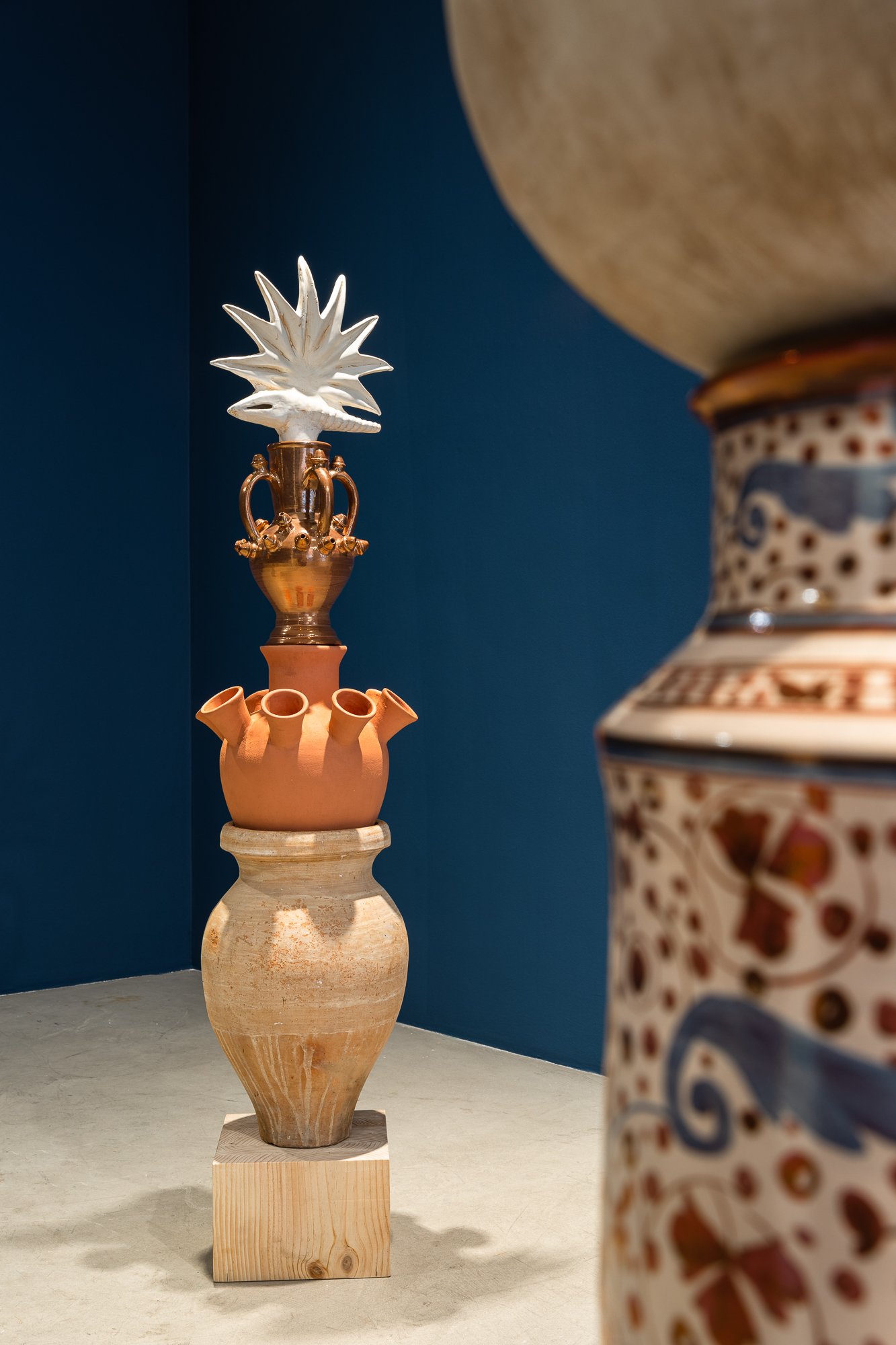
¡CUÁNTO RÍO ALLÁ ARRIBA!
2021
Exhibition at Travesía Cuatro, Madrid, Spain.
¡Cuánto río allá arriba!, the third exhibition of Asunción Molinos Gordo at Travesía Cuatro, pays tribute to the thousands of uses and forms of water, through a sculptural set created by the sum of elements of water pottery: pitchers, jugs, canteens, basins and rhytons. These objects, which for centuries were essential in the daily life of many different human societies, today are relics that have been left in disuse and relegated to museums due to their ethnographic value, a consequence of the generalization of running water, the mechanization of agricultural work and the rural exodus.
With this exhibition Molinos Gordo appropriates the work with clay, one of mankind’s oldest activities, through which we can intuit past customs, modes of communication as well as forms of interrelation between humans and their environment.
The artist uses a sculptural code based on the gestural potential of assemblage, and relies on archaeology, tools she has employed in previous projects such as Dunia, Mulk, Yabarut or Description de l’Égypte. Her recent installation at IVAM in Valencia – As we used to – reproduced the layout of the irrigation system in the huerta valenciana, the fertile land surrounding the city, a work of hydraulic engineering built by peasants in medieval Moorish times. On this occasion, she proposes a ceramic collage with which she allowed herself a series of historical licenses by mixing elements of the Nasrid pottery with others from different parts of the Mediterranean without following a chronological line. All of the pieces have been produced in collaboration with three craftsmen from Manises: Arturo Mora, Ana Palés and Juan Carlos Iñesta, who have preserved the techniques developed during the Middle Ages in the Levant.
Most of the pieces refer to the transport, storage and consumption of water, although we also find examples of botijos de engaño or cántaros de novia, which tell us about more playful customs loaded with symbols. The latter, with their perforated cavities, go from functionality to artifice, simulating an idea of abundance quickly spilling out before our eyes. Among the different morphologies there are nods to other forms of life on Earth which need water to survive and whose life is not regulated by productivity or commodification. Shariah – Islamic law – reflects this in two fundamental precepts: the universal right of human beings to quench their thirst and that of their animals, and the right to water their crops.
This sculptural production condenses the research undertaken by the artist around the equitable distribution of water and its importance in order to ensure social peace, something that all of the world’s rural communities understand as an indispensable resource. It is no coincidence that several of the works, supported by a metallic structure, are reminiscent of the charitable fountains –ollel – that offer drinking water to passersby in the cities of the Islamic world. Asunción accounts for the remains of an ancestral ethical system of cooperation and solidarity that have governed the planet’s resources until now and which is an example of self-management in local communities, both urban and rural, who nowadays already accumulate lived experiences as a consequence of climate change.
Water, considered a common good and source of life throughout the planet, and the right to its use, began trading on the Wall Street stock market in December 2020. Octavio Paz exclaimed ¡Cuánto río allá arriba! [How many rivers above!] in his poem El Cántaro Roto (1958) in which he questioned the myth of progress the rulers of his country used to disguise reality, in the same way that financial markets have created a mirage of mighty waters from a dystopian struggle for the privatization of the most precious resource on Earth.


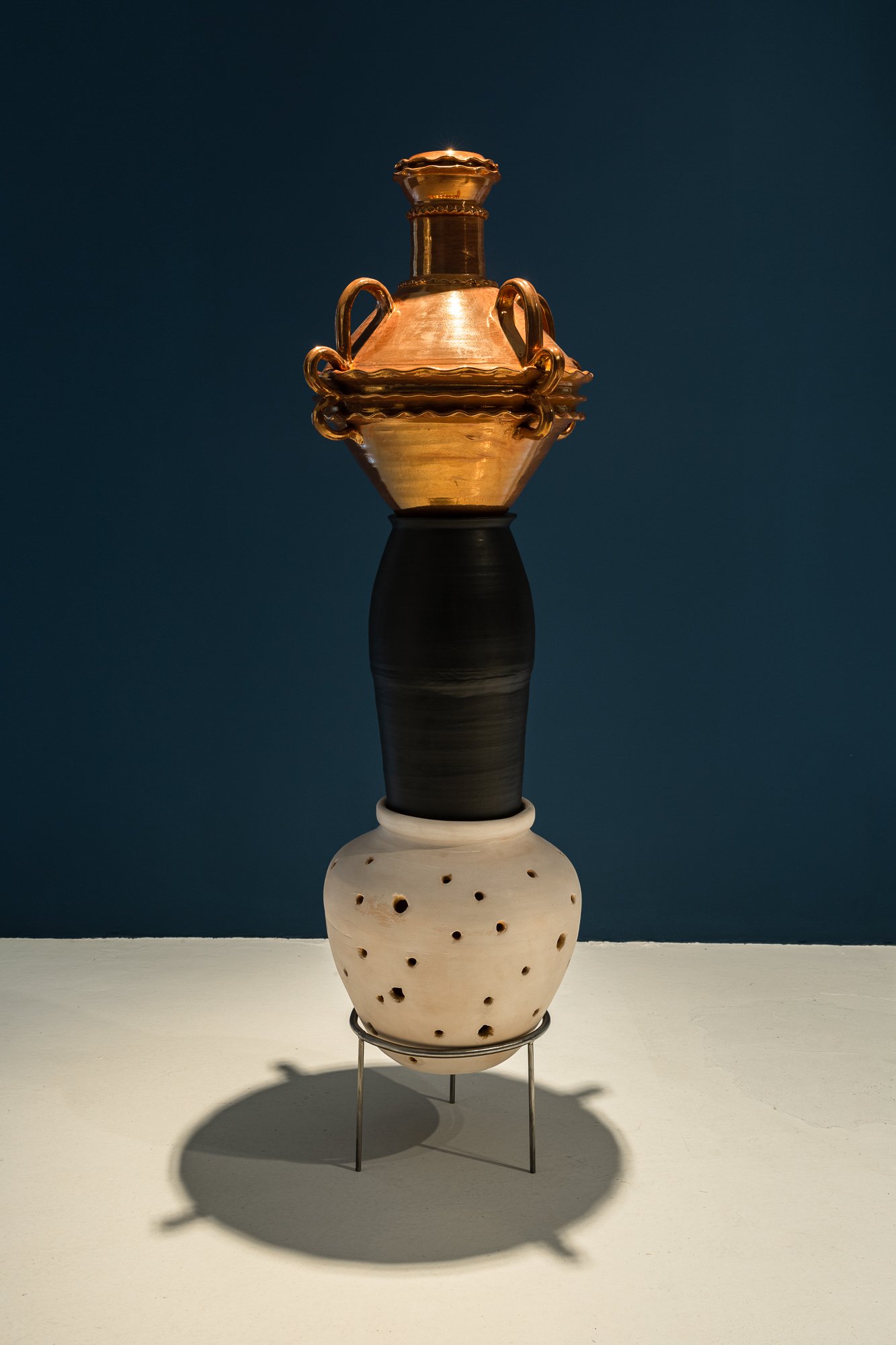

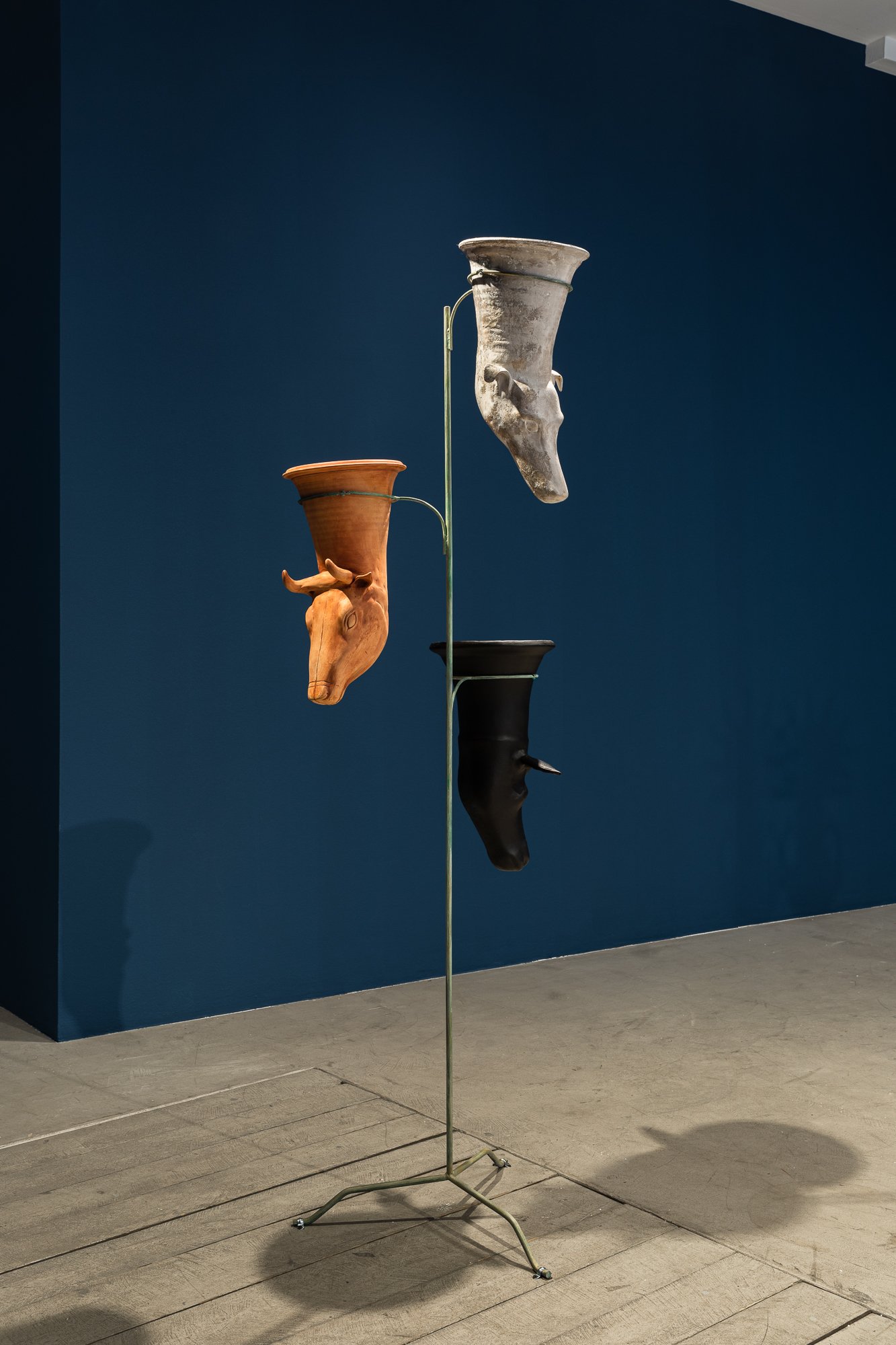
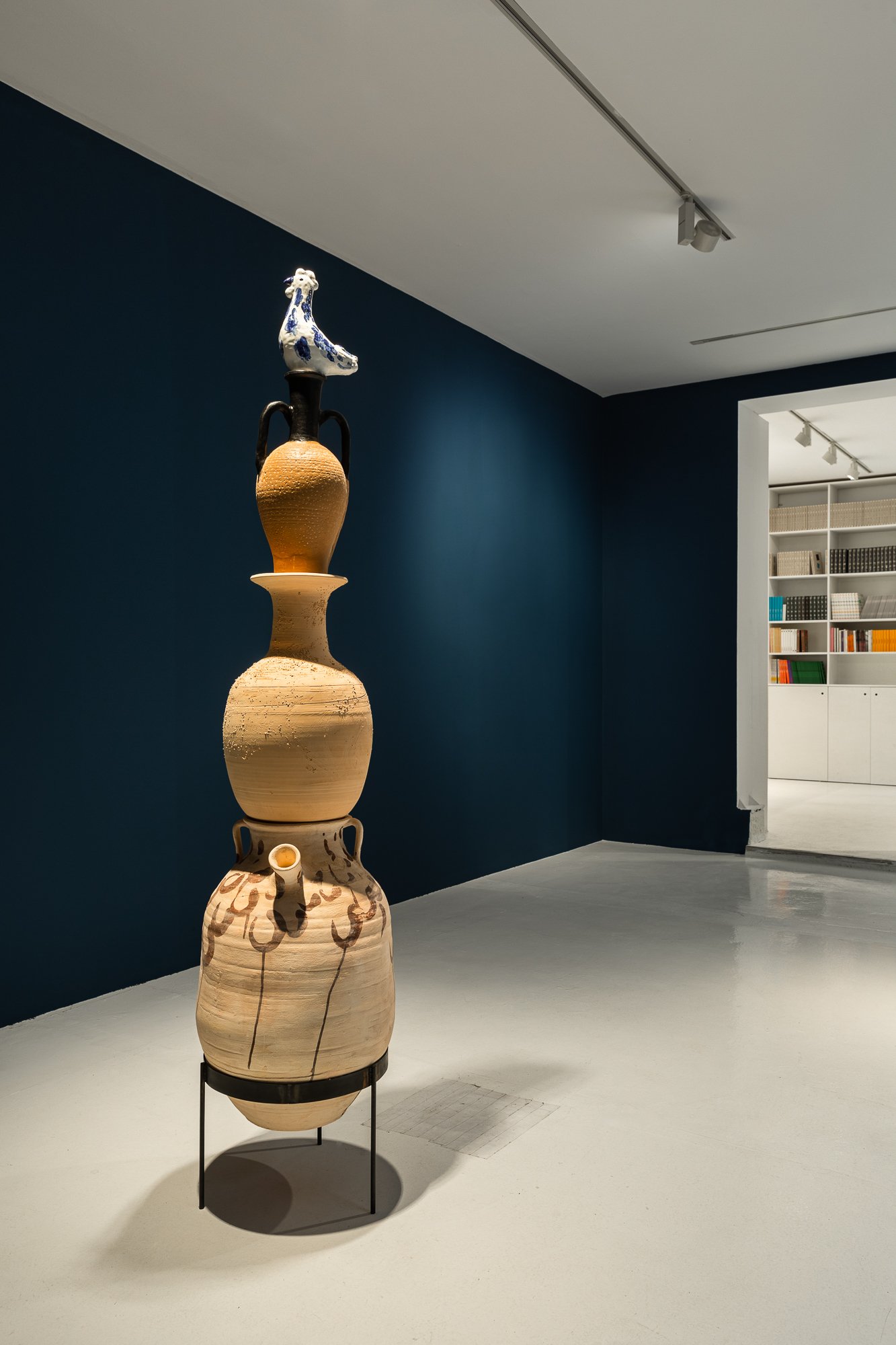
15th CUENCA BIENNIAL
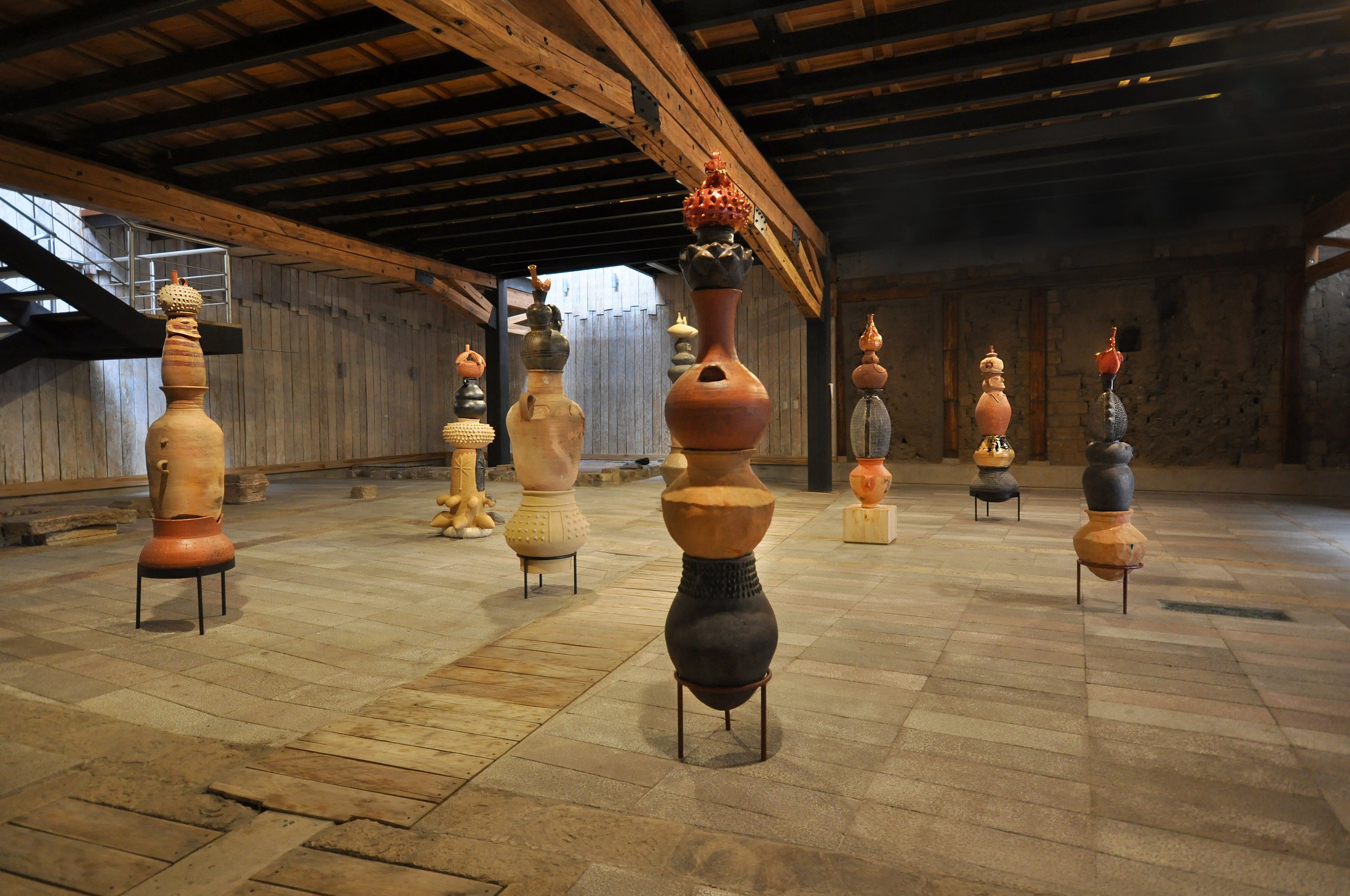
2022
Exhibition at 15th Cuenca Biennial, Ecuador.
¡Cuánto río allá arriba!
Curaduría de Blanca De la Torre
Ecuadorian traditional ceramic sculptures. Courtesy of the artist and Travesía Cuatro Gallery
Ceramists: Daniel Mezones, Margarita Fernandez, Talleres Encalada, Alejandro Rivera, Israel Marin, Juan Carlos Iñesta Domanises y Arturo Mora. Blacksmith: Baldo Calle. Partnership institutions: Museo Pamapungo, Museo Municipal Remigio Crespo Toral, CIDAP, Museo de las Culturas Aborígenes, MAAC, Museo Nahin Isaias Museo Municipal de Guayaquil.
Research collaborators: Christian Levi, Maria Tommerbak, Juan Pablo Vargas, Pablo Izurieta, Marcelo Guiracocha, Juan Pérez, Paulina Tara y Eduardo Tapán.
The water began trading on the Wall Street futures market in December 2020, breaking all established agreements on the right to free access. Working with pottery and ceramics from Cuenca and Ecuador, Molinos Gordo starts from the traditional devices of the inhabitants of these latitudes of Abya Yala to transport, store and consume water. As totems, he builds sculptures using pieces fitted one inside the other.
The totems, as an arrangement of the world through the superposition of elements, are normally made up of objects or beings that share qualities: speed, strength, cunning. Similarly, the assemblages proposed here allude to shared characteristics among their recipients: abundance, interspecies responsibility, equitable distribution, the right to life.
The sculptures, placed in the heart of the Casa de la Lira as if it were an ancient temple, invoke through their apotropaic qualities the protection that bodies of water need right now to be defended from privatization. In close proximity to the canals that cross the ground floor of this building, the sculptures coexist with the waters of the Tomebamba River and interact with them in their continuous flow towards the Amazon and the Atlantic.
